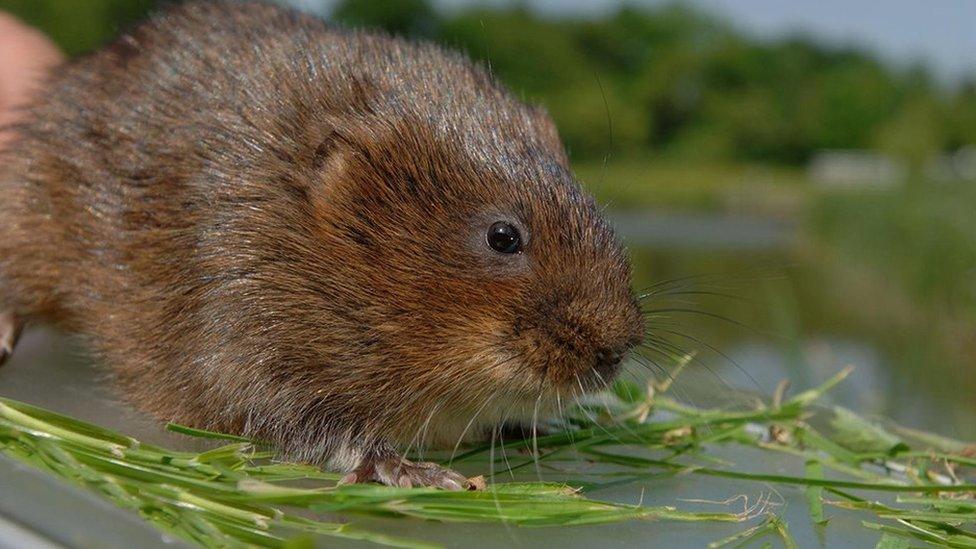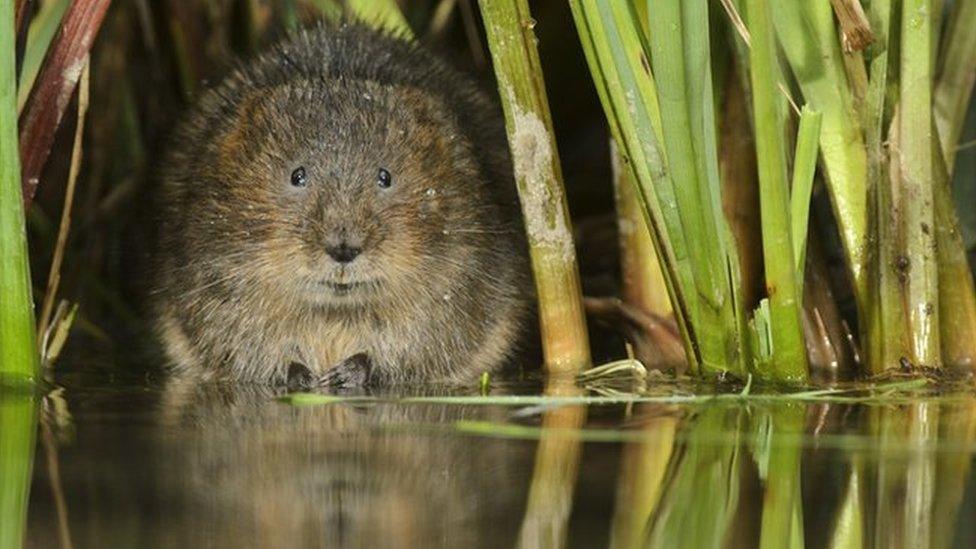Former Wigan industrial wasteland becomes new nature reserve
- Published

The new nature reserve, spanning parts of Wigan and Leigh, was once industrial wasteland
A former industrial wasteland, which is now a nationally important site for rare wildlife, has been officially designated as a nature reserve.
The habitats at the Flashes of Wigan and Leigh in Greater Manchester support willow tits, bitterns, water voles and great crested newts.
The 738-hectare site has become one of England's largest urban nature reserves, Natural England said.
It is also popular for fishing, cycling, nature walks and birdwatching.
The mosaic of shallow open water and wetland habitats includes swamp, reedbed, tall herb fen, wet marshy grassland and wet woodland.
Natural England said the designation, which is the first in the Greater Manchester area, recognises the transformation of the Flashes over the last 100 years.

The habitats at the Flashes of Wigan and Leigh in Greater Manchester support willow tits, bitterns, water voles and great crested newts
Chief executive Marian Spain said: "National Nature Reserves help reconnect people with our natural world, providing much needed opportunities to explore our incredible landscape for our health and wellbeing.
"The unique wetlands in Wigan and Leigh were forged by nature reclaiming former industrial land."
She added the designation demonstrated how it was "possible to reverse the decline in nature".
The site brings together a total of 13 sites, including Wigan Flashes, Amberswood, Three Sisters, and Bickershaw Country Park.
It also includes Viridor woodland, planted by Forestry England just over 20 years ago.

Why not follow BBC North West on Facebook, external, Twitter, external and Instagram, external? You can also send story ideas to northwest.newsonline@bbc.co.uk, external
Related topics
- Published28 September 2022

- Published25 September 2022

- Published2 August 2022

- Published6 July 2022

- Published13 July 2022
